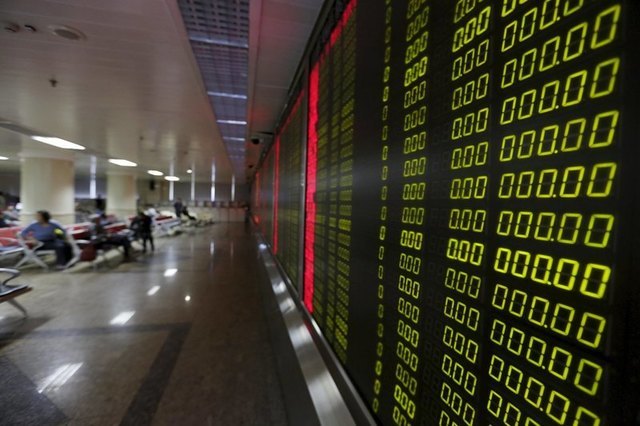SHANGHAI, Jan 8 - China's major stock indexes opened higher on Friday after Beijing ditched a circuit breaker mechanism that halted trading twice this week after share prices tumbled and had been blamed for making market sell-offs worse.
The People's Bank of China also raised its guidance rate for the yuan for the first time in nine trading days, after it allowed the currency's biggest fall in five months on Thursday, pressuring regional currencies and sending global stock markets tumbling as investors feared it would trigger competitive devaluations.
Chinese markets have seen a week of high drama, buffeted by the PBOC's lower yuan fixings against the dollar, two days of stock exchange suspensions, weak factory and services data and concerns about pending share sales by major stakeholders as a ban on such sales expires.
With the circuit breaker deactivated late on Thursday, the CSI300 index was up 1.7 percent at 3,350.66 points in early trade on Friday, while the Shanghai Composite Index was up 1.5 percent at 3,170.66 points.
The CSI300 had lost around 12 percent in the first four trading days of 2016, giving up all the gains made in 2015.
The circuit breaker, which only came into effect on Jan. 4, came under fire for kicking in too soon with its initial pause in trading and then encouraging a rush to sell before a second trigger halted the day's trade permanently.
To calm currency markets, the People's Bank of China set its daily midpoint rate for the yuan at 6.5636 per dollar prior to market open, firmer than Thursday's fix at 6.5646 and closing quote of 6.5929. Under China's currency regime the yuan is allowed to deviate 2 percent either side of the midpoint.
The yuan firmed in early trade, with dealers suspecting that the central bank intervened through state-run banks to support its currency, which could help allay fears that any depreciation would be allowed to continue at pace.
The onshore yuan recovered to 6.5887 in morning trade, while the offshore yuan was about 1.4 percent weaker at 6.6798, narrowing a spread that reached around 2 percent a day earlier, making the central bank's currency management task more complicated.
After its sharply lower fix on Thursday, the PBOC had later sown confusion by reportedly intervening heavily to defend the yuan in offshore trade, reversing a decline of more than 1 percent that took it to a record low of 6.7600 per dollar.
That left dealers at a loss to know what the central bank's aims were.
"The sharp drop has led to speculation that China is letting go of the reins on the CNY (yuan), or perhaps targeting faster depreciation to reach an 'equilibrium' level," wrote analysts at Barclays, while conceding that no one was really sure.
The previous days' depreciation of the yuan came in for international criticism, with Mexico's finance minister warning it could trigger a cycle of competitive devaluations, and U.S. Republican presidential candidates accused Beijing of trying to gain a trade advantage by making their exports cheaper.
Global stocks also swooned in response to the turmoil.
Markets will remain wary of China's currency goals, as mixed messages come from the central bank, which has repeatedly said it sees no basis for the currency to depreciate, while steering it gradually lower.
Sources told Reuters on Thursday that the PBOC is under increasing pressure from policy advisers to let the currency fall quickly and sharply, by as much as 10-15 percent, as its recent gradual softening is thought to be doing more harm than good.




















































